How to easily learn how to raise Dryopteris and the solution of yellowing leaves
Dryopteris, also known as iron filament grass, juvenile hair grass, iron grass, water pig hair grass, is a perennial herb evergreen plant, its light green thin leaves with jet-black bright leaves, appear particularly elegant and elegant. Clematis, as an indoor potted plant, makes the whole indoor home brilliant. So, what is the culture method of Dryopteris?
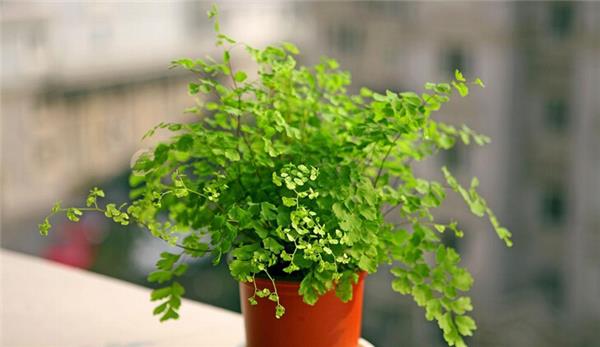
Culture methods of Dryopteris Dryopteris
1. Reproduction
Under general cultivation conditions, Dryopteris fern is mainly propagated by individual plants, and it can also be propagated by robes.
Ramet propagation: usually in the spring (early and mid-April) before the new buds germinate, combined with changing pots for ramet. Knock out the plants full of pots, remove most of the old culture soil, divide them into 2 to several clumps, cut off the connected rhizomes, plant them in pots, and become new plants.
Clasping reproduction: the spores of Dryopteris fern are scattered on moist soil when they mature and can grow and develop into new plants. Therefore, it can be seen that under the flower rack at the edge of the flowerpot, there are plants that propagate and grow by themselves, which can be transplanted when they grow to a certain height.
2. Soil
Dryopteris prefers loose, permeable and fertile calcareous sandy loam, and the cultivated soil can be mixed with loam, rotten leaf soil and river sand.
3. Lighting
Like bright scattered light, afraid of direct sunlight. If the light is too strong, the leaves will be withered and yellow or even die, which can be properly shaded in summer, and most of the leaves will be withered and yellow if the strong light is directed for a long time. It should be placed in a dark place indoors, and it can grow normally even if it is placed for 1 year.
4. Temperature
It is warm and hardy, and the suitable temperature for growth is 21-25 ℃ in daytime and 12-15 ℃ at night. In winter, the leaves can keep fresh green when the temperature is above 5 ℃, but frost injury will occur when the temperature is lower than 5 ℃.
5. Watering
Dryopteris likes the humid environment and should be fully watered in the peak growing season. In addition to keeping the basin soil moist, we should also pay attention to the high air humidity and sprinkle water around the plant when the air is dry. Especially in summer, water should be watered 1-2 times a day. If there is a lack of water, it will cause the leaves to shrink. Watering taboo basin soil when dry and sometimes wet, easy to make the leaves yellow.
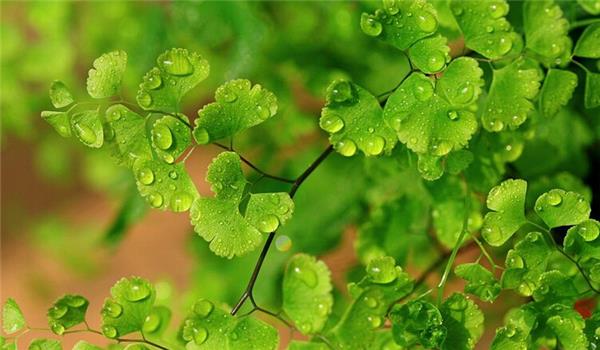
6. Fertilization
Apply thin liquid fertilizer 2-3 times a month, do not stain the leaves, so as not to cause rotten leaves, because of the calcium-loving habits of Dryopteris, basin soil should add appropriate amount of lime and broken eggshell, the effect of regular application of calcium fertilizer will be better. In winter, we should reduce watering and stop fertilizing.
7. Insect pests
Potted Dryopteris, often with leaf blight, can be controlled with Bordeaux solution at the initial stage, and 70% methyl topiramate 1000-1500 times in severe cases. If the plant is damaged by scale insects, 40% omethoate 1000 times solution can be used for control.
8. Pruning
After the beginning of autumn, as the temperature drops, the fern enters a slow growth stage, and the old leaves will gradually turn yellow, so they should be cut off.
9. Change the basin
When potted Dryopteris, the pot can choose light glaze basin and tile basin, the basin soil must have good water permeability and ventilation, generally use peat soil or rotten leaf soil rich in humus, and then add about 1 inch 3 coarse sand and fine sand, and put in some bone powder, and the bottom of the basin should be covered with some broken tiles or coarse sand to facilitate drainage, the rhizome planting depth is 1.5 to 2.5 meters. Spring planting or turning the basin to change soil, pot planting commonly used humus soil or peat soil, plus a small amount of river sand and base fertilizer mixed culture soil. Change the box every spring, do not hurt the root when changing the basin, avoid the wind blowing, and keep the basin soil moist and high air humidity. It can be managed normally after the new branches grow.
Dryopteris this relatively slender plant is more suitable for the bedroom and balcony, Chinese decoration is more suitable for breeding this kind of delicate flowers and plants, and very good with other collocation. It is not only fresh, but also healthy and green. So, what is the function of Dryopteris?
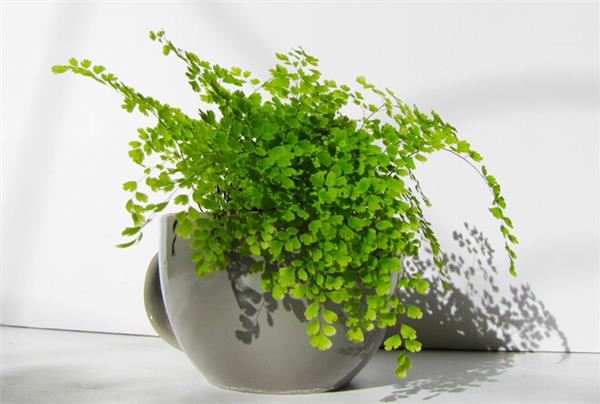
The effect of Dryopteris on the household environment
Dryopteris is raised as a household plant by many people after the decoration of the new house, because Dryopteris is an effective formaldehyde purifier, which can absorb a certain amount of formaldehyde every hour, which plays a good role in the home environment. And Dryopteris can well absorb harmful substances in cigarettes, as well as volatile harmful substances such as oil, gas and paint. In the office, the radiated xylene and other substances emitted by computer monitors and printers can also be well absorbed by Dryopteris.
Dryopteris is one of the most common green plants at home. Dryopteris has high ornamental value, beautiful plant type, elegant and elegant. However, many people often encounter the problem that the leaves of Dryopteris are dry and yellowing when they cultivate Dryopteris, which reduces the ornamental value of Dryopteris. What if the leaves of Dryopteris are dry and what if the leaves turn yellow? What if the leaves of Dryopteris are dry?
1. What if the leaves of Dryopteris are dry? the sun is too strong.
Reason: Dryopteris prefers semi-shade environment, avoid direct sunlight, too much light will cause rapid evaporation of water in the leaves of Dryopteris, which will cause the leaves to dry.
Solution: it is generally suitable to put the fern plants indoors out of the sun, but the growing season should also maintain a certain amount of sunlight for growth, and adequate astigmatism is the most suitable.
2. There is a lack of water when the leaves of Dryopteris are dry.
The reason: Dryopteris prefers warm and humid environments, including the soil where ferns are planted and the air around them. The main reason why the leaves of Dryopteris are dry is often due to insufficient humidity.
Solution: pay attention to watering the fern to keep the soil moist, and often spray water on the leaves to improve air humidity.
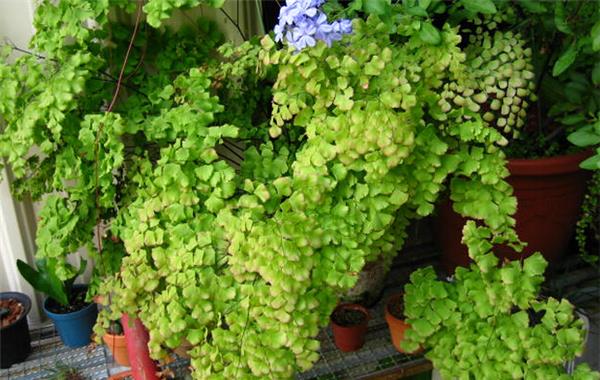
3. Stagnant water when the leaves of Dryopteris are dry.
Reason: Dryopteris likes the environment with high humidity very much, but if it is watered too much, it will also cause stagnant water, which will cause the leaves to dry up.
Solution: first of all, we must control the water, and then to see whether the basin and soil can be breathable and permeable. If not, it is recommended to consider changing the soil or changing it to hydroponics. Dryopteris should be maintained in accordance with the principle of less watering and more spraying. Dry places in the north can consider putting water on a plate under the basin to achieve the purpose of increasing air humidity.
4. Improper fertilization when the leaves of Dryopteris are yellowed.
The reason: the improper watering and fertilization of Dryopteris will stain the leaves, resulting in the withering and yellowing of the leaves and affecting the ornamental effect.
Solution: Dryopteris does not need much fertilizer, generally apply thin pancake fertilizer and water every 2 to 3 weeks, if a small amount of calcareous fertilizer can be added, the effect is better.
5. The soil discomfort caused by the yellowing of the leaves of Dryopteris.
The reason: Dryopteris grows fast and needs to be changed every spring. Dryopteris likes loose, permeable and fertile calcareous sandy loam, and attention should be paid to the choice of soil if the soil does not conform to the growth habits of Dryopteris. It is easy to lead to poor growth of Dryopteris and the leaves begin to yellowing and falling.
Solution: pot culture soil can be mixed with loam, rotten leaf soil and river sand in the same amount.
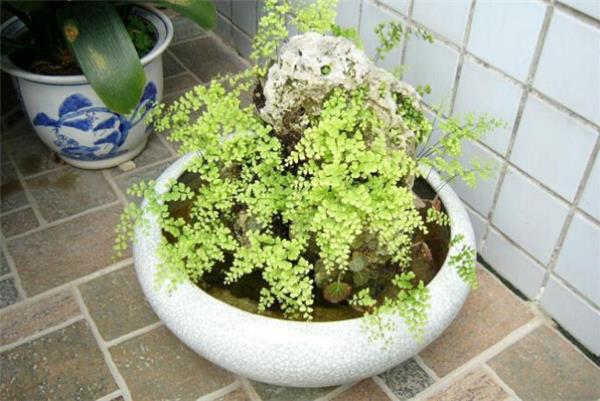
6. Improper pruning of the yellowing leaves of Dryopteris
Reason: when withered leaves are found in the maintenance process, Dryopteris should be cut off in time to keep the plant fresh and beautiful, and conducive to the germination of new leaves, otherwise the branches and leaves are too cluttered and crowded, it will lead to growth weakness and leaves yellowing.
Solution: when the clump of fern leaves is too dense, the old leaves can be pruned properly every autumn.
Conclusion: after reading this article, I believe you must have a certain understanding of what to do when the leaves of Dryopteris are dry, how the leaves of Dryopteris are yellow and how to raise them. If you want your Dryopteris to be beautiful and colorful, you must be more careful in the maintenance of Dryopteris. The above is about what to do when the leaves of Dryopteris are dry and how to turn yellow. I hope it can be helpful to everyone.
Solution: it is generally suitable to put the fern plants indoors out of the sun, but the growing season should also maintain a certain amount of sunlight for growth, and adequate astigmatism is the most suitable.
2. There is a lack of water when the leaves of Dryopteris are dry.
The reason: Dryopteris prefers warm and humid environments, including the soil where ferns are planted and the air around them. The main reason why the leaves of Dryopteris are dry is often due to insufficient humidity.
Solution: pay attention to watering the fern to keep the soil moist, and often spray water on the leaves to improve air humidity.

3. Stagnant water when the leaves of Dryopteris are dry.
Reason: Dryopteris likes the environment with high humidity very much, but if it is watered too much, it will also cause stagnant water, which will cause the leaves to dry up.
Solution: first of all, we must control the water, and then to see whether the basin and soil can be breathable and permeable. If not, it is recommended to consider changing the soil or changing it to hydroponics. Dryopteris should be maintained in accordance with the principle of less watering and more spraying. Dry places in the north can consider putting water on a plate under the basin to achieve the purpose of increasing air humidity.
4. Improper fertilization when the leaves of Dryopteris are yellowed.
The reason: the improper watering and fertilization of Dryopteris will stain the leaves, resulting in the withering and yellowing of the leaves and affecting the ornamental effect.
Solution: Dryopteris does not need much fertilizer, generally apply thin pancake fertilizer and water every 2 to 3 weeks, if a small amount of calcareous fertilizer can be added, the effect is better.
5. The soil discomfort caused by the yellowing of the leaves of Dryopteris.
The reason: Dryopteris grows fast and needs to be changed every spring. Dryopteris likes loose, permeable and fertile calcareous sandy loam, and attention should be paid to the choice of soil if the soil does not conform to the growth habits of Dryopteris. It is easy to lead to poor growth of Dryopteris and the leaves begin to yellowing and falling.
Solution: pot culture soil can be mixed with loam, rotten leaf soil and river sand in the same amount.

6. Improper pruning of the yellowing leaves of Dryopteris
Reason: when withered leaves are found in the maintenance process, Dryopteris should be cut off in time to keep the plant fresh and beautiful, and conducive to the germination of new leaves, otherwise the branches and leaves are too cluttered and crowded, it will lead to growth weakness and leaves yellowing.
Solution: when the clump of fern leaves is too dense, the old leaves can be pruned properly every autumn.
Conclusion: after reading this article, I believe you must have a certain understanding of what to do when the leaves of Dryopteris are dry, how the leaves of Dryopteris are yellow and how to raise them. If you want your Dryopteris to be beautiful and colorful, you must be more careful in the maintenance of Dryopteris. The above is about what to do when the leaves of Dryopteris are dry and how to turn yellow. I hope it can be helpful to everyone.
Related
- Wuhan Hospital Iron Tree Blooming Result Was Instantly Frightened by the Gardener Master
- Which variety of camellia is the most fragrant and best? Which one do you like best?
- What is the small blue coat, the breeding methods and matters needing attention of the succulent plant
- Dormancy time and maintenance management of succulent plants during dormancy
- Minas succulent how to raise, Minas succulent plant pictures
- What are the varieties of winter succulent plants
- How to raise succulent plants in twelve rolls? let's take a look at some experience of breeding twelve rolls.
- Attention should be paid to water control for succulent plants during dormant period (winter and summer)
- Watering experience of twelve rolls of succulent plants
- Techniques for fertilizing succulent plants. An article will let you know how to fertilize succulent plants.



